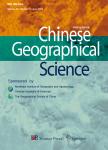Relationship Between Built Environment, Socio-economic Factors and Carbon Emissions from Shopping Trip in Shenyang City, China
Relationship Between Built Environment, Socio-economic Factors and Carbon Emissions from Shopping Trip in Shenyang City, China作者机构:Northeast Institute of Geography and Agroecology Chinese Academy of Sciences Department of Geography Hong Kong Baptist University School of Geographical Science Northeast Normal University
出 版 物:《Chinese Geographical Science》 (中国地理科学(英文版))
年 卷 期:2017年第27卷第5期
页 面:722-734页
核心收录:
学科分类:0303[法学-社会学] 02[经济学] 083001[工学-环境科学] 0830[工学-环境科学与工程(可授工学、理学、农学学位)] 0201[经济学-理论经济学] 020105[经济学-世界经济] 08[工学] 0708[理学-地球物理学] 0705[理学-地理学] 0813[工学-建筑学] 0704[理学-天文学] 0833[工学-城乡规划学]
基 金:Under the auspices of National Natural Science Foundation of China(No.41201159,41571152,41401478,41201160,41001076) the Key Research Program of the Chinese Academy of Sciences(No.KSZD-EW-Z-021-03,KZZD-EW-06-03)
主 题:二氧化碳排放量 社会经济因素 建成环境 沈阳市 购物 中国 logistic回归模型 公共交通工具
摘 要:Promoting active travel behavior and decreasing transport-related carbon dioxide(CO_2) emissions have become a priority in many Chinese cities experiencing rapid urban sprawl and greater automobile dependence. However, there are few studies that holistically examine the physical and social factors associated with travel CO_2 emissions. Using a survey of 1525 shoppers conducted in Shenyang, China, this study estimated shopping-related travel CO_2 emissions and examined how the built environment and individual socioeconomic characteristics contribute to shopping travel behavior and associated CO_2 emissions. We found that, firstly, private car trips generate nearly eight times more carbon emissions than shopping trips using public transport, on average. Second, there was significant spatial autocorrelation with CO_2 emissions per trip, and the highest carbon emissions were clustered in the inner suburbs and between the first and second circumferential roads. Third, shopping travel CO_2 emissions per trip were negatively correlated with several built environment features including population density, the quantity of public transport stations, road density, and shop density. They were also found to be significantly related to the individual socio-economic characteristics of car ownership, employment status, and education level using a multinomial logistic regression model. These empirical findings have important policy implications, assisting in the development of measures that contribute to the sustainability of urban transportation and meet carbon mitigation targets.



